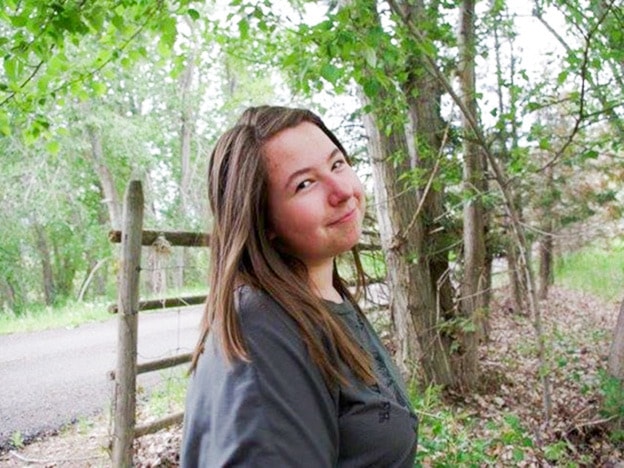Chloe Highley’s death last month was a tragic loss of a young life, but the 18-year-old Penticton Secondary student was not alone in her struggles with anxiety.
According to her father, Dan Highley, Chloe struggled with anxiety and depression recently, eventually turning to drugs and self-medication when she was unable to find help within the mental health system, resulting in her death on April 26 by an accidental heroin overdose.
Highley, an addictions counsellor himself, has spoken out in the media, talking about the problems with the availability of mental health support in B.C. Chloe had been scheduled to enter a specialized youth mental health program at B.C. Children’s Hospital in April, but he said that entry was cancelled because Chloe’s case wasn’t acute enough.
It’s a story that Sandra Richardson, a vice principal at Princess Margaret Secondary knows too well part of a rising tide of anxiety and related mental health issues the school system is seeing among students.
Along with Chloe’s death, there was another student suicide earlier in April, the latest in a string of suicides among teens and young adults in the community.
“You take a look over the last year and four months, there have been eight suicides,” said Richardson. “It is not just about the schools either. I think parents are really struggling to find ways to help their kids as well.
“It’s rampant. How long has our community been without a child psychiatrist? There is such a profound need in our community.”
With support from the Penticton Rotary Club, Richardson, along with Maggie principal Terry Grady and other educators began working on a program last year focused on helping teens deal with anxiety and other mental health issues before they become overwhelming.
In a presentation to the Rotary Club, Richardson said the statistics are shocking, with 15 to 20 per cent of students struggling with a range of mental health issues: Stress, anxiety, and depression, all the way to the extreme of the early onset of significant mental health issues.
The Maggie program includes everything from removing the stigma associated with mental health issues, encouraging students to seek out support, and plans for developing a cadre of “peer listeners.”
Richardson said the program is working, but, despite the work being done and existing programs to help students, there are some, like Chloe and the suicide earlier in April, who slip through the net.
“If I had the answer for that…,” said an emotional Richardson, trailing off into silence. “It is heartbreaking to watch. We try so many different things in so many different ways to keep kids connected to school. We know by keeping them connected to school, that is the very best chance they have.”
But there is only so much the schools can do. Richardson knows of one student they have identified who is very at risk, but that student has to wait two months to get into a counsellor.
“You know what? I’m a teacher … I’m not a counsellor,” said Richardson. “I can’t take a kid apart because I don’t know how to fix them. We are all just teachers.”
School counsellors used to think they were just the front line, a stopgap or “finger in the dike,” according to Richardson.
“They would refer kids to their doctors,” she said. “Then our counsellors found out they probably know more than the physicians know about this. It was a shock to them to realize that sometimes they are all the kids have.”
Richardson said schools do their best to work collaboratively with parents, and reach out to them when they see their child is struggling. But she said it is a problem for the whole community.
“It goes back to that old adage, it takes a village. And our kids need us more than ever,” said Richardson, who isn’t sure what the cause is of the rising amount of anxiety being experienced by students. Her experiences working with an orphanage in Tanzania make her wonder if it isn’t related to technology and our 24/7 society.
“These children (in Tanzania) have had the absolute most horrific lives … but they don’t struggle with the same thing our kids struggle with,” said Richardson. “The amount kids see on the internet, the amount they hear about things, plays a role.
“When something goes on in Vancouver, everybody knows. It’s instant. That innocence … it’s gone and our kids are having to deal with these huge life things and they are not capable of dealing with it.”
Richardson stressed that is only her own view, and that she wishes she had answers to these questions.
“I see students coming in my school every day, and they are hurting. And we don’t know what to do to fix it,” said Richardson. “The bottom line is we are really trying to get our community and our parents talking about how they can help one another with their kids.”
Dealing with Chloe’s overdose death, the earlier suicide and with Kaylee Kozari-Bowland, who lost her battle with cancer last month, it has been hard on students and educators throughout the district, but especially at Penticton Secondary.
“I know the staff at Pen High, they are going through a rough time, they have had a lot to deal with on their plate,” said Richardson. “This has been a really tough year. It has been hard on staff, it has been hard on students, and it has been hard on administrators. I think a lot of us are just hanging on till summer and looking forward to a school year next year where things are a bit more settled."
